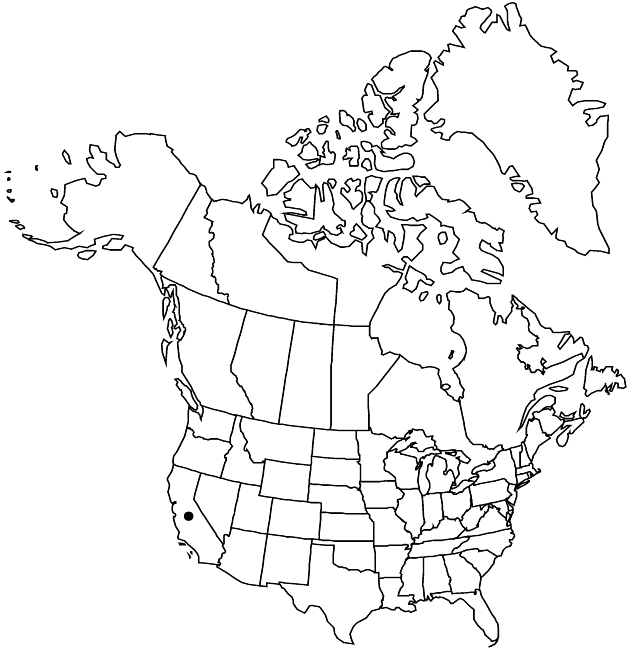Lasthenia debilis
Univ. Calif. Publ. Bot. 40: 63. 1966.
Annuals, to 30 cm. Stems erect, usually branched proximally, sometimes distally, villous. Leaves linear to linear-oblong, 10–80 × 1–5.5 mm, margins usually entire, sometimes 1–2-toothed (teeth to 2 mm), faces hairy. Heads showy. Involucres campanulate to obconic, 5–7 mm. Phyllaries 5, obovate to ovate, slightly hairy. Receptacles subulate, papillate, glabrous. Ray florets 5–10; (corollas yellow or white) laminae broadly elliptic to oblong, 3–5 mm. Disc corolla lobes 5. Anther appendages deltate (with 1–4 wartlike glands; style apices ± deltate with apical tufts of hairs and subapical fringes of shorter hairs). Cypselae black, ± linear, to 3 mm, hairy; pappi 0, or of 2–4 brown or white, ovate or lanceolate, aristate scales. 2n = 8.
Phenology: Flowering Mar–May.
Habitat: Shaded or open, moist woodland slopes
Elevation: 0–500 m
Discussion
Lasthenia debilis is inconspicuous and has pale green foliage and lightly pigmented, relatively short rays. Populations with white or nearly white rays, uncharacteristic for lasthenias, are known.
Selected References
None.
